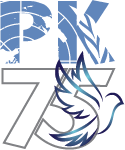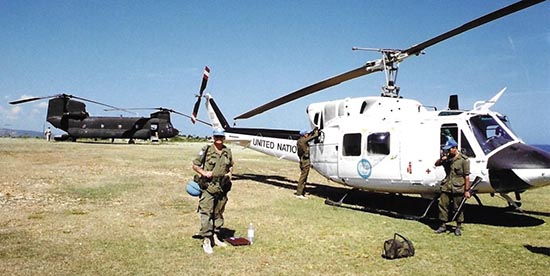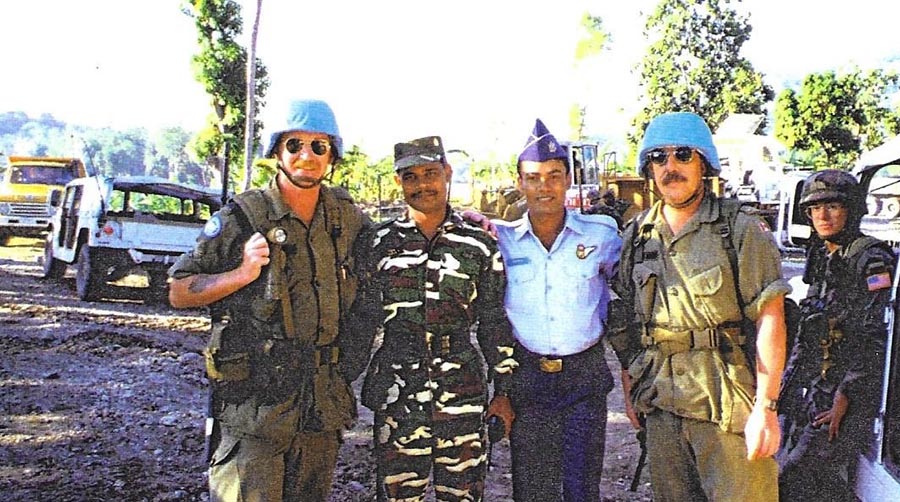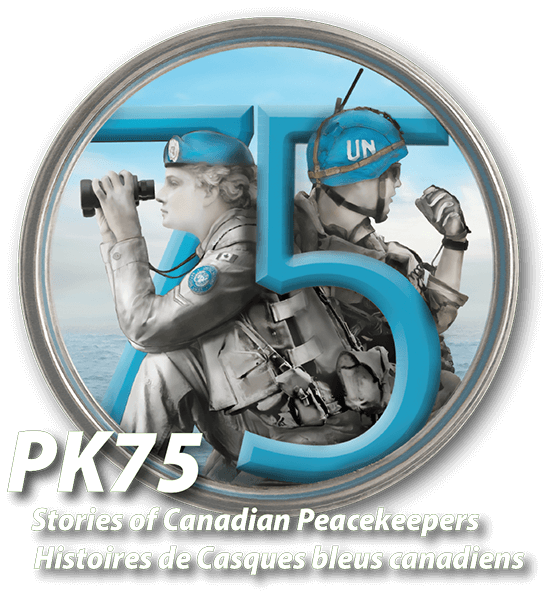


As with all tours, there is an education and awareness attached that changes people and perspectives of things outside the natural realm of our home environment. We are amongst the most fortunate in the world here in Canada. No country is without its own problems, but our involvement in so many peacekeeping deployments has led to Canadians being well respected for our professionalism and determination to complete all taskings. It has been my privilege to be a Canadian peacekeeper, and I sincerely cherish the international exposure to foreign countries, armies, and people.
In 1992, I volunteered for a position vacancy message to a United Nations posting to Croatia. With 15 years in the regular forces at the time, and trades transfer several years earlier, I retained the desire for adventure — and for helping others — that we trained for throughout our careers. Always reminded of being a soldier first and a tradesman second, both offered desirable benefits for units seeking to provide enhanced operational capabilities. Personally, both added to my own ongoing awareness and education. A September to March winter tour in a war zone was no picnic, and this one was also an eye opener to the cruelty and inhumanity of ethnic intolerance. We required interpreters for our interpreters as reports and translations were often intentionally misinterpreted between warring sides. We were fortunate that no loss of life occurred during our deployment, but there were some prior and subsequent Canadian losses. We owe our respect and gratitude for their service and sacrifice. Incidents, there were plenty. Lessons learned are in the archives. Medals and memories remain with those who served within.
Just two years later I was deployed to Haiti, from March-September 1995 where the intent was to aid in developing a democratic election for the people in a third world country. We simultaneously provided aid to repair infrastructure damage and establish polling stations across the country. Two base stations had been established, and we were there to build eight more. These were in addition to the side projects to assist the general population in road and bridge improvements, market and school enhancements, and well and water distribution. Ripe with National Geographic type content were the people and landscape of the country. Acclimatization took about three weeks, and as a fair haired, fair skinned person who had never been to a tropical environment, I baked in the heat but reveled in the environment whenever I could. Wherever I went, people pulled strands of my hair, many not having seen a redhead before. Within UNMIH we had approximately 100 civilian police personnel, mostly RCMP, and many Haitians had never before seen women in uniform and in positions of authority. I again felt privileged to be part of something that provided hope and assistance to a poor but very proud people in need, fellow people indeed.
This was the first such unification of Canadian and American Engineering units since the development of the Alaska Highway in 1943. We were attached with the 92nd Engineering Combat Battalion from Fort Stewart, Georgia. We Canadians were strong in the vertical construction and light on the horizontal capabilities, while our counterparts were heavy on horizontal construction and light on the vertical side, which blended us together nicely.
At the end of the tour, I received the U.S. Department of the Army Achievement Medal for exceptional meritorious service while assigned during Operation Uphold Democracy in Haiti. It stated that my hard work and dedication to duty reflects great credit upon myself, my unit and the UNMIH. I am asked about it by Canadians and it is recognized by Americans. It helped make my tour even more memorable and relatable today.
My final tour came along in 1999 with a promotion to Sergeant and a posting to Sarajevo with 1 Construction Engineering Unit out of Moncton, NB, deploying as part of SFOR. I was an augmentee to their unit, but I knew many of its members as it is a small engineering world. Again, this was a huge international deployment and there were 12 countries gathered involved in its operations. The projects we undertook took place all over the country and even back into Croatia. For me, to witness in person the difference during and after the war was indeed memorable, especially to know conclusively that we had a positive influence.
Biography
Retired Sergeant Bruce Given joined the Regular Canadian Forces in 1977 at the age of 18. From basic training in Cornwallis, NS, he was sent on his infantry training with the Princess Patricia’s Canadian Light Infantry in Winnipeg, MB. This posting happened to include security for the Pope’s visit there in 1978. Desiring the east coast, he transferred to The Royal Canadian Regiment in Canadian Forces Base (CFB) Gagetown, NB in 1979. His training continued beyond a basic rifleman to include driver wheeled and radio signaler. With a helicopter unit on the base, there was plenty of training for rappelling from the choppers and surrounding cliffsides and towers. Gagetown was a large Base with a very big training area, so was prime for live and dry fire exercises, experiences we often repeated and drilled into perfection.
Bruce’s first tour was with NATO to Germany for four and a half years, beginning in 1980. This was still the Cold War Era, and the Berlin wall separated the east from the west and the stand off on both sides remained. The Soviet empire was still strong, intimidating, and united. The mission then was to prevent the type of thing going on now with Ukraine. Huge international forces were stationed throughout Europe until the 1990’s, and the training amongst them was educational, interesting, and beneficial towards development and understanding beyond borders and between nations.
Returning from Germany, Bruce had applied for and had been accepted into a trades transfer. Looking potentially to a career after service in the construction industry, he remustered to the Construction Engineers. His trades training took place in Chilliwack, BC, from 1985-1987. Interestingly it was then a combination of two trades, one being a draughtsman and the other a surveyor. Outside the military, the two disciplines are separate, so training on both together offered a unique capability to gather data in the field, from which technical drawings were then produced. At first, this was done by hand and note taking, but later evolved to highly technical instruments and AutoCAD computer works. This unique combination of qualifications, held by only a few in the Forces, led to his participation in three United Nation deployments.
With bilingualism being encouraged within the Forces, Bruce took a year-long French course in Ottawa in 1991, and subsequently remained within the Construction Engineering unit there. In 1992, he heard of a position for someone of his qualifications in Croatia and volunteered for the tour. As the submission went up - and back down - the chain of command, it ended up with the Commanding Officer volunteering the entire unit, and thus they were deployed to United Nations Protective Force (Croatia) 1992–1993. Fortunately, they left no one behind and had a successful deployment. The physical war itself was from 1991–1995. Tens of thousands of Canadians were deployed to the former Balkans of Bosnia and Croatia, and later Kosovo.
Two years later, in 1995, Corporal Given was deployed with the advance party to the United Nations Mission in Haiti. An impoverished country with a history of government failures and previous dictatorships, it was often hit with tropical storms, hurricanes, and earthquakes, while infighting amongst gangs was rampant throughout the country. It is still making the news with the current and ongoing unrest within the population across a varying and difficult terrain. Those of us Canadians with some French capability were able to assist in communications, due to the similarities with Creole that is spoken there.
In 1996, Master Corporal Given was posted to Edmonton where he remains today. In 1998 he was promoted to Sergeant and sent on a tour to Bosnia for six months with1 Construction Engineering Unit Company in Sarajevo, within the Stabilization Force in Bosnia and Herzegovina (SFOR), a NATO-led, multinational peacekeeping force. We tended to do such things as base expansions/improvements, checkpoint and outlying position enhancements, route clearances and checking weight tolerances for equipment such as tanks to cross bridges. Most bridges were replacements or had been repaired due to war damage. My job was made more challenging due to the infrastructure drawings and details being available only in Serbo-Croat. However, the symbols used were identifiable and math is math, regardless of language, whenever calculations were needed.
Within his 25th year of service, Bruce retired, and then was rehired as a civilian in the Base Construction Unit. Fully retired now, he remains active and volunteering as a veterans advocate on multiple fronts such as the Veterans Association Food Bank, spearheading as the initial Operations Manager Edmonton, and as Quilts of Valour representative and presenter. You may hear of him again.

Preparing to depart from Port-De-Paix and return to the capital, saving hours on the ground getting to and from our destinations and to multiple locations in the same day. It was the best in air conditioning while battling the heat of the tropical island. I believe it was 408 Squadron from Edmonton providing the Huey helicopter transportation.

Bruce Given.


